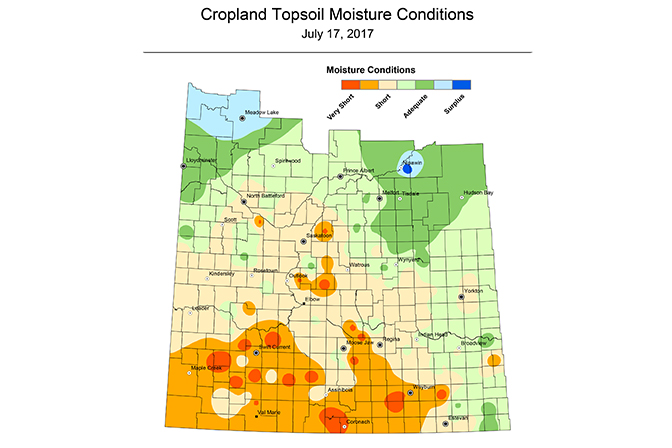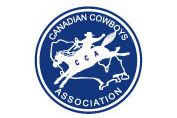
The majority of crops across the Southwest remain ahead or at normal stage of development despite the dry conditions.
According to the Saskatchewan Agriculture Crop Report for the period of July 11 to 17, crop development is keeping pace with past years. Among Fall Cereals, 17 per cent of field are ahead, 79 per cent are normal, and just four per cent are behind normal development. It is estimated that 15 per cent of Spring Cereals are ahead, 60 per cent are normal, and 25 per cent are behind in development. Field with Oilseeds are 15 per cent ahead, 59 per cent normal, and 26 per cent behind. For Pulse Crops, 16 per cent are ahead, 67 per cent are normal, and 17 per cent are behind.
However, topsoil moisture conditions have significantly deteriorated in the past week as a result of the continued high temperatures and lack of moisture. Topsoil moisture on cropland is rated as 10 per cent adequate, 38 per cent short and 52 per cent very short. In the Southwest, Hay land and pasture topsoil moisture is rated as five per cent adequate, 29 per cent short and 66 per cent very short. All crop districts in the Southwest are reporting that at least 85 per cent of both the cropland and the hay land and pasture are short to very short topsoil moisture at this time. Crop Districts 3ASW (Coronach, Assiniboia and Ogema) and 3BS (south of Shaunavon) report that 100 per cent of cropland and hay land and pasture are short to very short topsoil moisture.
The Crop Report details that significant rainfall is needed in the region to help crops fill and to replenish the topsoil. However, any rainfall will likely come too late for some areas.
Haying operations are continuing in the Southwest, with 15 per cent of the hay crop now cut and 67 per cent has been baled or put into silage. Hay quality is currently rated as seven per cent excellent, 50 per cent good and 43 per cent fair. Overall, hay yields are lower than average and many producers have indicated that there will likely not be a second cut this year due to lack of plant growth. Pastures in many areas are at carrying capacity and rain is needed to help replenish dugouts.
With hot temperatures and little precipitation, crops continue to be severely heat-stressed. Crop yields will be impacted by these conditions, especially on crops that have been in full flowering during the high temperatures.
The Crop Report notes that there are indications that harvest of winter cereal and pulse crops will begin in some areas within the coming weeks.
The majority of crop damage this past week is attributed to lack of moisture, high temperatures, wind and hail. Much of the canola crop has at least some damage from heat-blasting. Gophers and large wildlife continue to cause issues in some areas.
Estimated Southwest Hay Yields
(dry land tons per acre, as of July 17)
Alfalfa – 0.74 tons per acre.
Brome/Alfalfa – 0.76 tons per acre.
Other Tame Hay – 0.69 tons per acre.
Wild Hay – 1.2 tons per acre.
Greefeed – 1.4 tons per acre.





